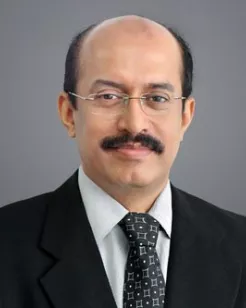What is TAVI?
TAVI (Transcatheter Aortic Valve Implantation), also known as TAVR (Transcatheter Aortic Valve Replacement) is a minimally invasive procedure used to replace a stenotic aortic valve in the heart.
During TAVI, a specially designed catheter with a new aortic valve is inserted into the body through a small incision, typically in the groin. The catheter is guided to the heart and positioned in the stenotic valve. The new valve is then deployed and expanded, pushing the damaged valve out of the way, and taking over its function.
TAVI is now approved by US fda for low risk patients and also as an alternative to open-heart valve surgery for patients who are at high risk for complications from surgery, such as elderly patients or those with multiple health problems. It typically requires a shorter hospital stay and has a faster recovery time than traditional surgery.
Why and when TAVI is recommended?
TAVI is recommended when a patient has a damaged aortic valve and is at high risk for complications from traditional open-heart surgery. TAVI is a minimally invasive procedure that can provide an effective treatment option for patients who are not suitable candidates for surgery due to their age, frailty, or other medical conditions TAVI is now also recommended for low-risk patients with results as good as surgical aortic valve replacement.
TAVI is typically recommended when a patient has severe aortic stenosis, a condition in which the aortic valve becomes stiff and narrowed, limiting blood flow from the heart to the rest of the body. Symptoms of severe aortic stenosis can include chest pain, shortness of breath, and fatigue. If left untreated, severe aortic stenosis can lead to heart failure, intermittent loss of consciousness , stroke, and even death.
Before undergoing TAVI, patients will undergo a series of tests and evaluations to determine if the procedure is appropriate for them. These evaluations may include imaging tests, such as echocardiography or computed tomography (CT) scans, as well as a physical exam and review of the patient's medical history. A dedicated team of healthcare professionals, including cardiologists, cardiac surgeons, and other specialists, will work together to determine the best course of treatment for each individual patient.
How is TAVI different from the conventional treatment?
TAVI or TAVR is a minimally invasive alternative to the conventional treatment for severe aortic stenosis, which is surgical aortic valve replacement (SAVR). Here are some ways in which TAVI differs from SAVR:
1. Minimally Invasive Procedure: TAVI is a minimally invasive procedure that can be performed through a small incision in the groin, without the need for open-heart surgery. SAVR, on the other hand, involves opening the chest and temporarily stopping the heart to replace the aortic valve.
2. Performed under Local Anesthesia: TAVI can be performed under local anesthesia and conscious sedation, whereas SAVR requires general anesthesia.
3. Faster Recovery: TAVI typically has a faster recovery time compared to SAVR, as it is less invasive and does not require the chest to be opened. Patients who undergo TAVI can usually return home within 2 days and resume normal activities soon after discharge within a few weeks, while SAVR patients may need to spend several days in the hospital and may require several weeks to fully recover.
4. Complications: TAVI is generally associated with fewer complications than SAVR. For example, TAVI has been shown to have a lower risk of stroke, bleeding, and infection than SAVR.
5. Patient selection: TAVI is typically recommended for patients who are at high risk for complications from SAVR, such as elderly patients or those with multiple health problems.
Overall, TAVI offers a less invasive alternative to the conventional treatment for severe aortic stenosis, with fewer complications and a faster recovery time for high-risk patients. However, the decision to undergo TAVI or SAVR should be made after careful evaluation by a team of healthcare professionals, who can determine the best course of treatment for each individual patient.
How is life after TAVI?
For many patients who undergo TAVI or TAVR, life after the procedure can be significantly improved. TAVI or TAVR can relieve symptoms such as chest pain, shortness of breath, and fatigue, allowing patients to participate in activities they may have previously been unable to do. Here are some aspects of life after TAVI:
1. Recovery period: Most patients will need to stay in the hospital for a 2 to 3 days few days and will then be able to resume normal activities few days after discharge need to rest at home for a few weeks before resuming normal activities.
2. Improved quality of life: TAVI can significantly improve the quality of life for many patients. Patients may experience improved energy levels, decreased chest pain, improved ability to exercise, and an overall improvement in their ability to perform daily activities.
3. Long-term outcomes: TAVI has been shown to have long-term outcomes like surgical aortic valve replacement in terms of survival, valve function, and symptom relief.
Follow-up care: After TAVI or TAVR, patients will need regular follow-up care, including regular monitoring of the valve and heart function. This may include regular visits with a cardiologist, echocardiograms, and other imaging tests.
4. Lifestyle changes: Patients who undergo TAVI may be advised to make lifestyle changes such as following a heart-healthy diet, quitting smoking, and increasing physical activity to maintain optimal heart health.
Overall, life after TAVI can be significantly improved for many patients. However, the recovery process and long-term outcomes can vary depending on the individual patient's health and other factors. Patients should discuss their expectations and concerns with their healthcare provider before deciding whether to undergo TAVI.
Our Doctors
We have some of the best specialists from around the world, they bring years of experience and offer evidence-based treatment to ensure the best care for you.






